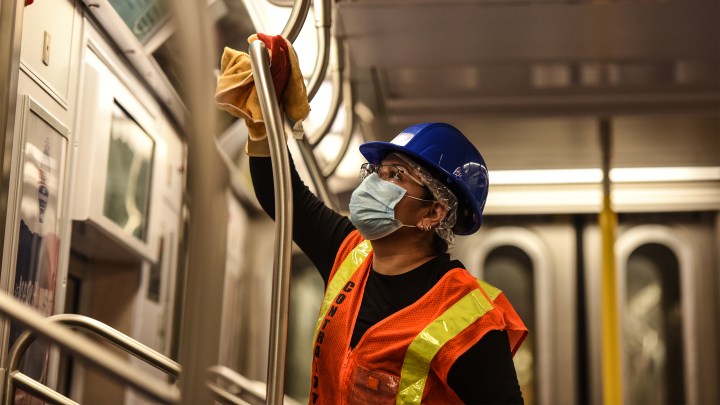
As tax income shrivels, state budgets face a pandemic reckoning
As tax income shrivels, state budgets face a pandemic reckoning

Early in the pandemic, the Federal Reserve set up a lifeline for state and local governments. It’s called the Municipal Liquidity Facility, and it’s a program that state and local governments can tap if they’re in need.
By and large, they are in need — state tax revenue is down, spending is up and red ink is everywhere.
State budget shortfalls are already having serious consequences, said Nick Johnson, who follows state fiscal policy at the Center on Budget and Policy Priorities.
“In April and May alone, states and localities have either furloughed or laid off 1.5 million workers — about twice as many [as] in the entire aftermath of the Great Recession,” Johnson said.
States got a round of funding from the federal government in March, but that money has already been budgeted.
Tracy Gordon, a senior fellow at the Urban-Brookings Tax Policy Center, said states are using it to disinfect public spaces, make correctional facilities safer and transition to online learning.
“It’s unclear that the amount that was appropriated in March — when we didn’t realize how long this crisis would endure — is sufficient to those kinds of challenges,” Gordon said.
Without more federal aid, states don’t have many options. They could borrow more, like from the Fed’s Municipal Liquidity Facility.
But Abby Urtz, senior vice president at FHN Financial, said many states are required to balance their budgets every year.
“It’s really uncomfortable for them to go out into the markets, or to tap a Fed facility or other loans to borrow for cash flow,” she said.
Giving states money is the most effective way for the federal government to shore up the safety net, Gordon said.
The thinking, she added, is we recognize that you’re better at providing these services because you know your populations, you know your costs, you know your geographies.
State and local governments, Gordon said, represent around 12% of the country’s GDP.
Helping them helps the rest of the economy, too.
There’s a lot happening in the world. Through it all, Marketplace is here for you.
You rely on Marketplace to break down the world’s events and tell you how it affects you in a fact-based, approachable way. We rely on your financial support to keep making that possible.
Your donation today powers the independent journalism that you rely on. For just $5/month, you can help sustain Marketplace so we can keep reporting on the things that matter to you.












